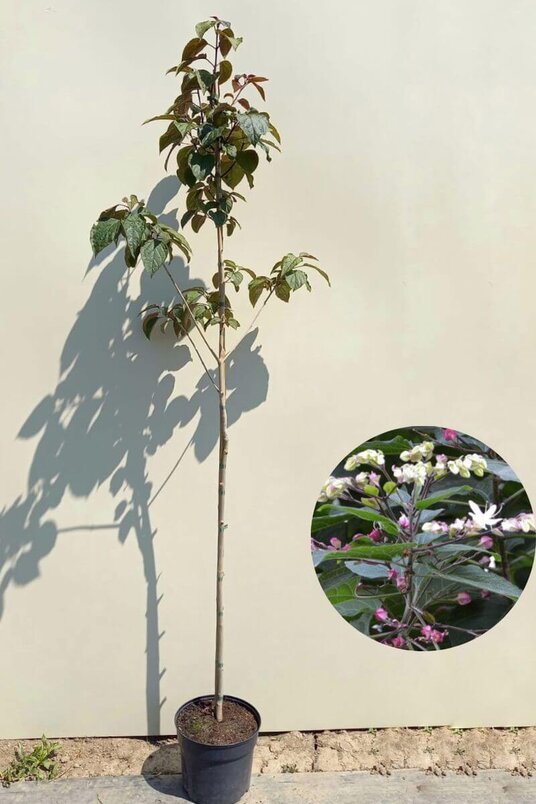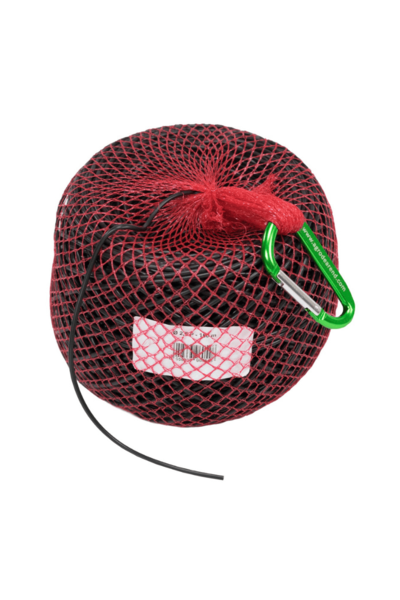Young Peanut Butter Tree | Clerodendrum trichotomum
Did you know that the Clerodendrum trichotomum is also known as the Peanut Butter Tree? When the leaves of these plants are rubbed against each other, the scent of peanut butter is released.
Discount!
- Quantity Discount Per piece
- -10% €48,38 Incl. VAT
Guaranteed damage-free delivery
Free shipping from €150,- (International)
Can be planted throughout the year
Which plants go well with the Peanutbutter tree?
A well-designed garden can enhance the aesthetics and health of your Pindakaasboom. Here are some plants that go well with the Pindakaasboom:
Perennials: Combine the Pindakaasboom with perennials such as Lavender and Sage that share the same sun and water requirements, providing a beautiful color contrast.
Shrubs: Plant shrubs like the black currant or bushy ivy nearby; their flowers will create a nice contrast with the leaves and flowers of the Pindakaasboom.
Our popular trees: We have many popular trees that will look beautiful in combination with the peanut butter tree, such as the magnolia and the prunus!
Seasonal changes of the peanut butter tree
The peanutbutter tree is a seasonal wonder, with changing colors and textures marking each phase of the year:
- Spring: In spring, the peanut butter tree comes to life with fresh green leaves, preparing for the summer bloom.
- Summer: Late in summer, the peanutbutter tree shines with pinkish-red calyxes emitting a sweet scent, a true delight for both the eyes and the nose.
- Autumn: In autumn, the leaves transform into a rich palette of reddish and purple hues, while the blue fruits that follow the bloom add an extra color dimension.
- Winter: Although the leaves fall, the colorful fruits and the unique structure of the branches continue to provide a visual spectacle against the winter background.
How to plant the tree?
- Determine the final location of the tree and ensure it is free from cables, debris, old plants, and other obstacles that may hinder the tree's growth.
- Dig a planting hole that is twice the width of the root ball. Loosen the soil at the bottom of the planting hole and mix the excavated soil with (organic) garden soil or planting substrate.
- Adjust the planting hole to the height where the root ball fits and firmly press the soil.
- Fill the planting hole with water and wait for it to settle. Check if the root ball is sufficiently moist.
- Place the tree or plant in the planting hole. It is extremely important that the tree is not planted too deep, as this can cause root rot.
- Insert a tree stake or bamboo stake firmly into the ground on the side of the tree where the most wind comes from.
- Now, place the watering ring or create a mound of soil around the tree so that water can seep into the ground.
Why Choose a Young Tree from Amitis
- Easy to plant yourself due to the compact size and light weight
- Conveniently delivered to your home in a sturdy packaging
- Experience the growth and development of your own tree
- Easy to maintain
- Cultivate the size and growth form you are looking for
- Attain mature size within a short time
- Can be planted year-round as everything is delivered in pots
- No root loss and better chances of establishment as everything is pot-grown
- Cost-effective purchase
- Fresh, healthy plants directly from the grower
Questions?
Want to know more about pruning? Read our page on tree maintenance! Feel free to contact us; we are happy to assist!
Specifications
-
Flower color
Red-Pink-White -
Flowering months
August-September -
Location
Sun-semi shade -
Fruits
Striking poisonous berry -
Evergreen
Not wintergreen -
Winter hardiness
Reasonably winter-hardy -
Leaf color in summer
Green -
Leaf color in autumn
Yellow
Reviews(4)
- Add your review
-
-
-
"Dit is zeker een fijn bedrijf en verdienen echt 5 ***** ! We hadden nog nooit planten online gekocht want je weet niet wat je krijgt. Het tegendeel is waar , prachtige pindakaasbomen van 180 cm en heel goed verpakt in stevige dozen. We sturen wel een foto als ze bloeien."
-
- Pieter
-
-
-
-
"Mooie kwaliteit van de geleverde boompjes."
-
- Jorg Hulpio
-
-
-
-
"Mooie planten die goed aanslaan in de volle grond."
-
- Jannette Heringa
-
-
-
-
"Netjes geleverd, product geheel naar verwachting."
-
- P.M Renirie
-












